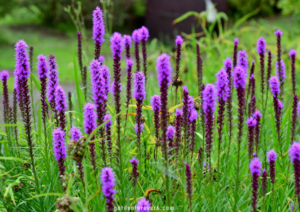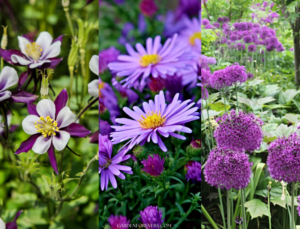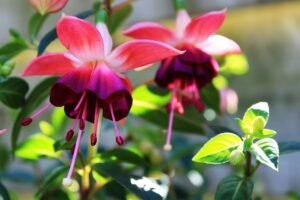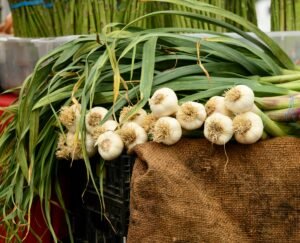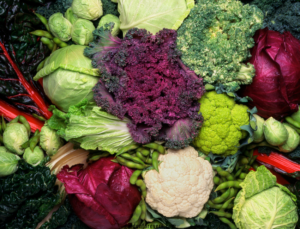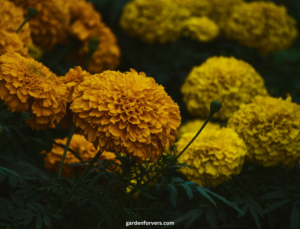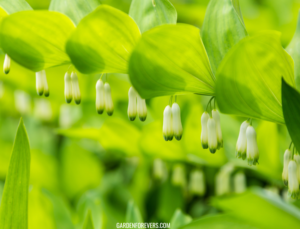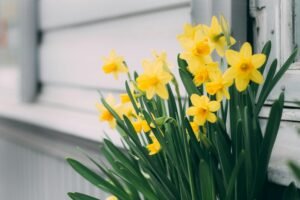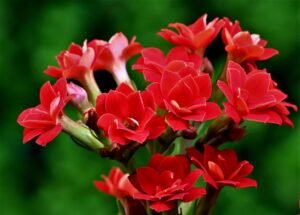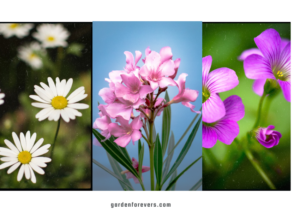Create Magic With Flowers That Start With C
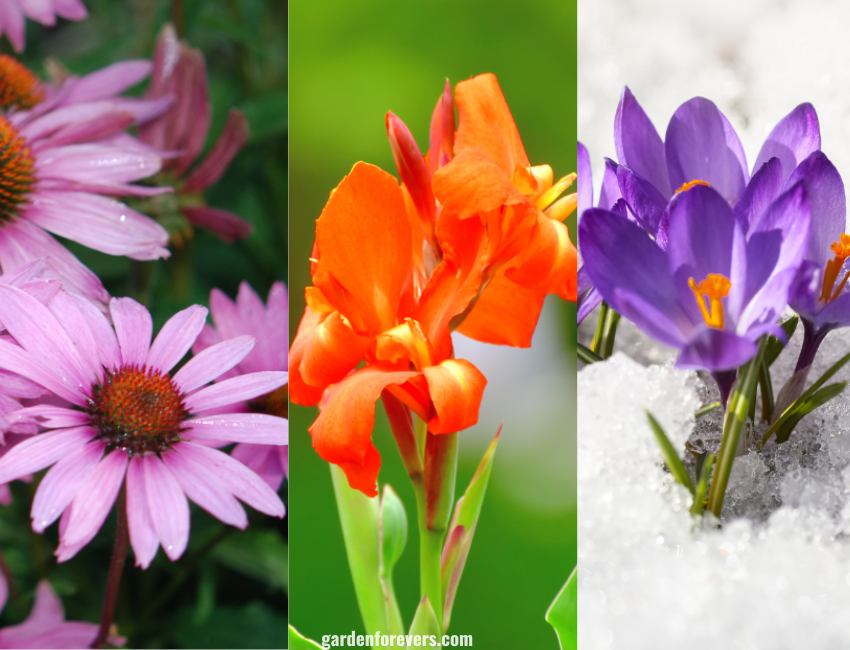
Are you ready to enhance your garden with a delightful array of flowers? In this article, we’re going to explore an amazing selection of flowers that start with a C! These blooms will not only add stunning beauty to your outdoor space but also offer a variety of shapes, colors, and delightful fragrances. Whether you’re a gardening expert or a beginner, these flowers that start with the letter C will inspire and bring a touch of magic to your garden.
Introduction to Flowers That Start With C
Looking for the perfect addition to your garden? Flowers that begin with the letter “C” provide a stunning variety of choices, from the colorful Cosmos to the elegant Camellia. These flowers are not only visually striking but often come with rich symbolism and unique growing requirements. Whether you’re planning a themed garden or just want to try something new, these “C” flowers are sure to captivate your senses.
In This Article
Carnation

Carnations are well-known for their ruffled petals and sweet fragrance. Available in a wide range of colors, including pink, red, yellow, and white, they symbolize love, fascination, and distinction. They are perfect for borders, beds, or even as cut flowers.
| Common Name | Carnation Flower |
|---|---|
| Scientific Name | Dianthus caryophyllus |
| Family Name | Caryophyllaceae |
| Blooming time | Spring to summer |
| Number of Species | None |
| Toxicity | Non-toxic |
| Symbolism | Love, fascination, distinction |
Camellias
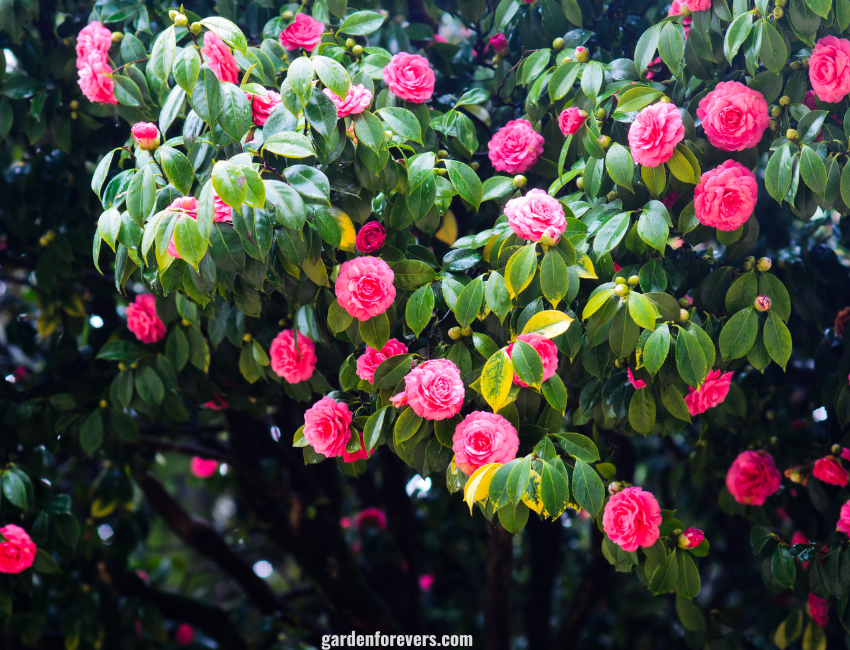
Camellias are elegant evergreen shrubs with glossy leaves and large, rose-like flowers. They bloom in late winter to early spring, offering a pop of color when most gardens are still dormant.
| Common Name | Camellia Flower |
|---|---|
| Scientific Name | Camellia japonica |
| Family Name | Theaceae |
| Blooming time | Winter to spring |
| Toxicity | Toxic to pets and humans if ingested |
| Symbolism | Admiration, perfection, gratitude |
Cosmos
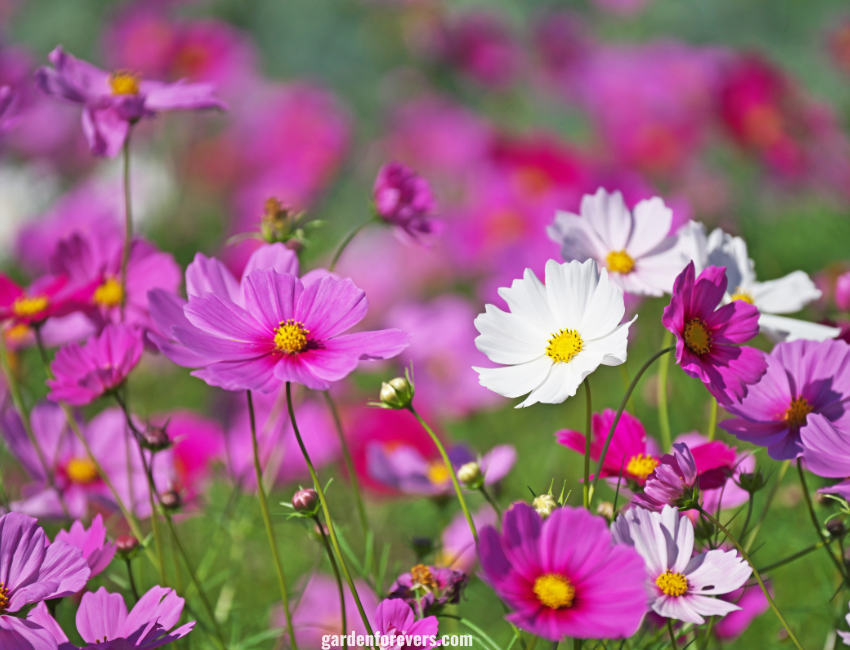
Cosmos are tall, daisy-like flowers that bloom profusely in shades of pink, white, and purple. These easy-to-grow annuals thrive in full sun and attract pollinators like butterflies and bees.
| Common Name | Cosmos Flower |
|---|---|
| Scientific Name | Cosmos bipinnatus |
| Family Name | Asteraceae |
| Blooming time | Summer to fall |
| Toxicity | Non-toxic |
| Symbolism | Harmony, peace, order |
Columbine

Columbine flowers are known for their uniquely shaped, spurred blooms in shades of blue, purple, pink, or white. These perennials add grace to woodland gardens or shaded areas.
| Common Name | Columbine Flower |
|---|---|
| Scientific Name | Aquilegia |
| Family Name | Ranunculaceae |
| Blooming time | Spring to early summer |
| Toxicity | Toxic if ingested |
| Symbolism | Faith, hope, wisdom |
Chrysanthemum
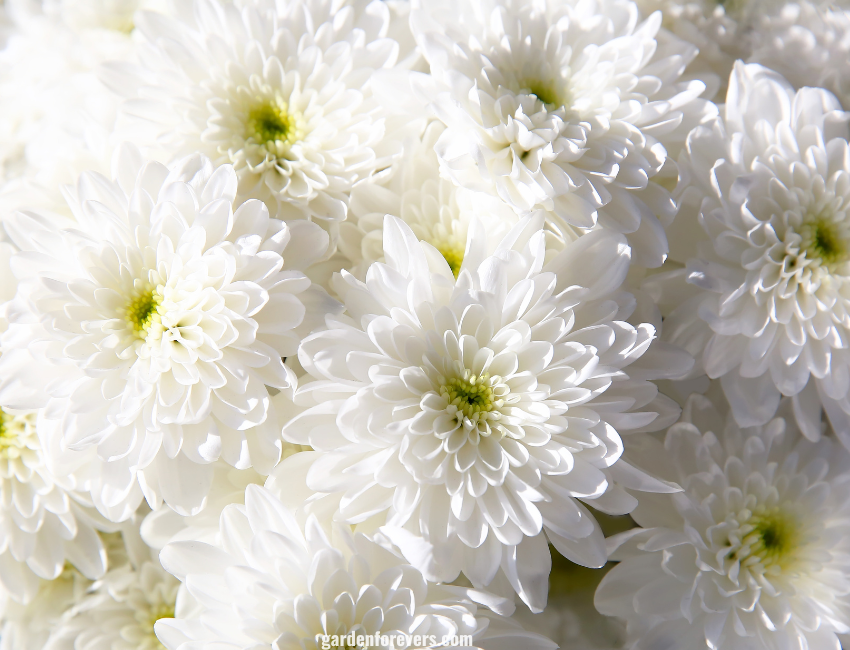
Chrysanthemums, often called mums, are beloved for their vibrant colors and abundant blooms in the fall. They symbolize optimism, joy, and longevity and are commonly used in seasonal arrangements.
| Common Name | Chrysanthemum Flower |
|---|---|
| Scientific Name | Chrysanthemum morifolium |
| Family Name | Asteraceae |
| Blooming time | Late summer to fal |
| Number of Species | 3 species |
| Toxicity | Toxic to pets |
| Symbolism | Longevity, joy, optimism |
Clematis
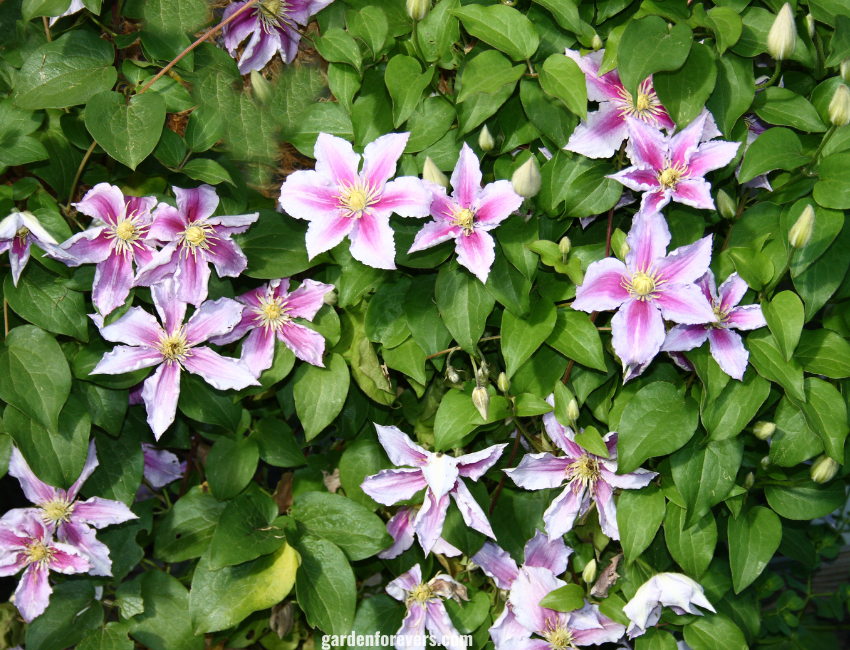
Clematis is a climbing vine that produces large, showy flowers in a wide range of colors. Perfect for trellises or arbors, they bring vertical interest to any garden.
| Common Name | Clematis Flower |
|---|---|
| Scientific Name | Clematis spp. |
| Family Name | Ranunculaceae |
| Blooming time | Spring to early fall |
| Toxicity | Toxic if ingested |
| Symbolism | Ingenuity, mental beauty |
Coneflower
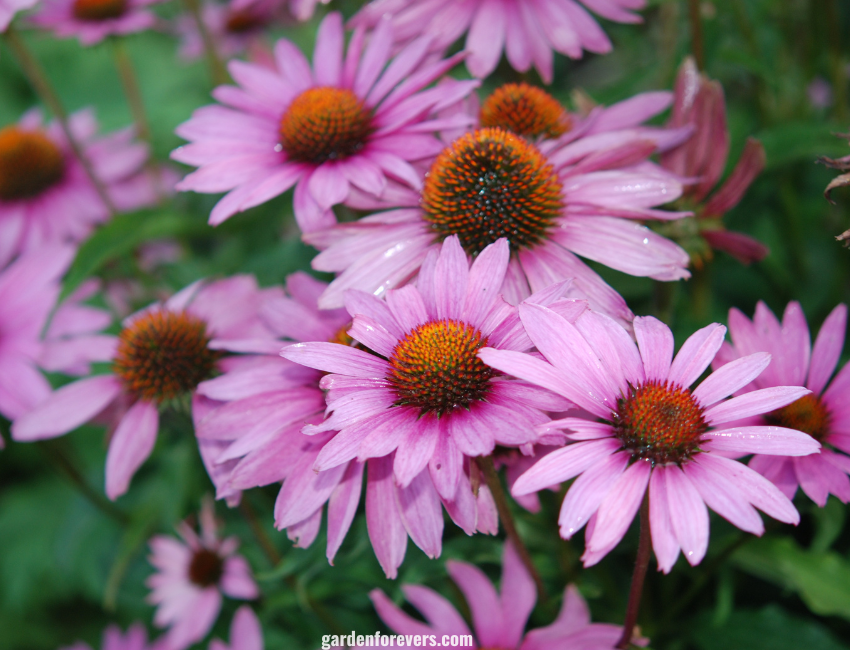
Coneflowers are hardy perennials that produce daisy-like blooms with raised centers. These flowers are easy to grow and attract butterflies and bees, making them perfect for pollinator gardens.
| Common Name | Coneflower |
|---|---|
| Scientific Name | Echinacea purpurea |
| Family Name | Asteraceae |
| Blooming time | Summer to fall |
| Number of Species | 3 species |
| Toxicity | Non-toxic |
| Symbolism | Strength, healing, health |
Crocus
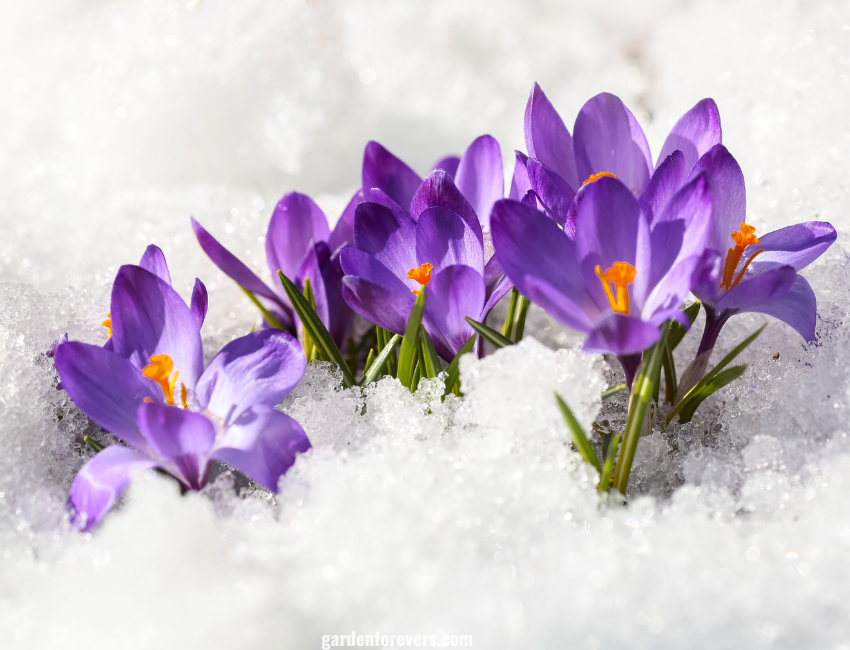
Crocuses are among the first flowers to bloom in the spring, often pushing through the snow to display their delicate purple, yellow, or white petals. They’re perfect for rock gardens or borders.
| Common Name | Crocus Flower |
|---|---|
| Scientific Name | Crocus spp. |
| Family Name | Iridaceae |
| Blooming time | Late winter to early spring |
| Toxicity | Toxic if ingested |
| Symbolism | Youthfulness, joy, cheerfulness |
Related
Calendula
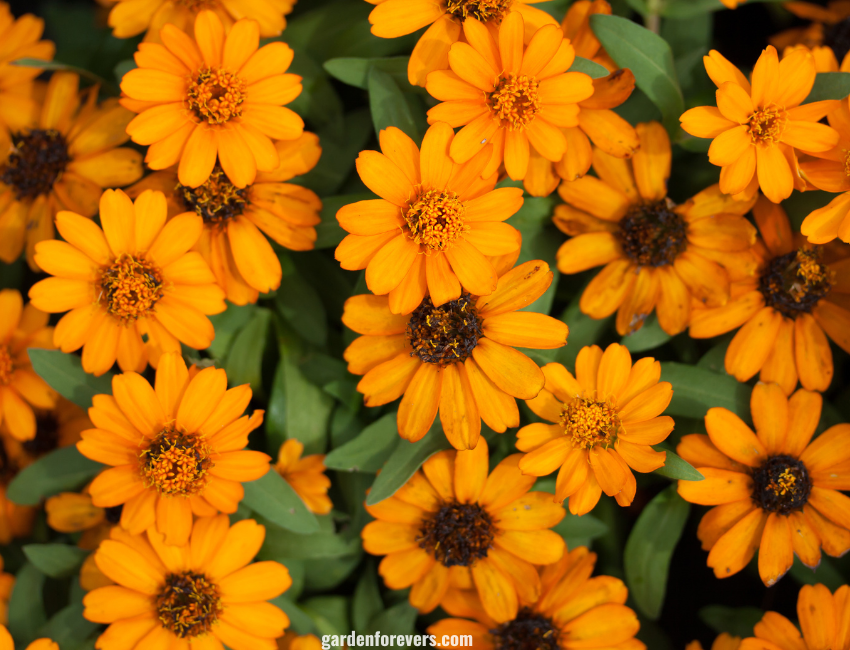
Also known as pot marigolds, Calendula are cheerful, golden-yellow flowers that thrive in cooler weather. They are commonly used in herbal remedies and skin care products.
| Common Name | Calendula Flower |
|---|---|
| Scientific Name | Calendula officinalis |
| Family Name | Asteraceae |
| Blooming time | Spring to fall |
| Toxicity | Non-toxic |
| Symbolism | Healing, protection, comfort |
Calla Lily
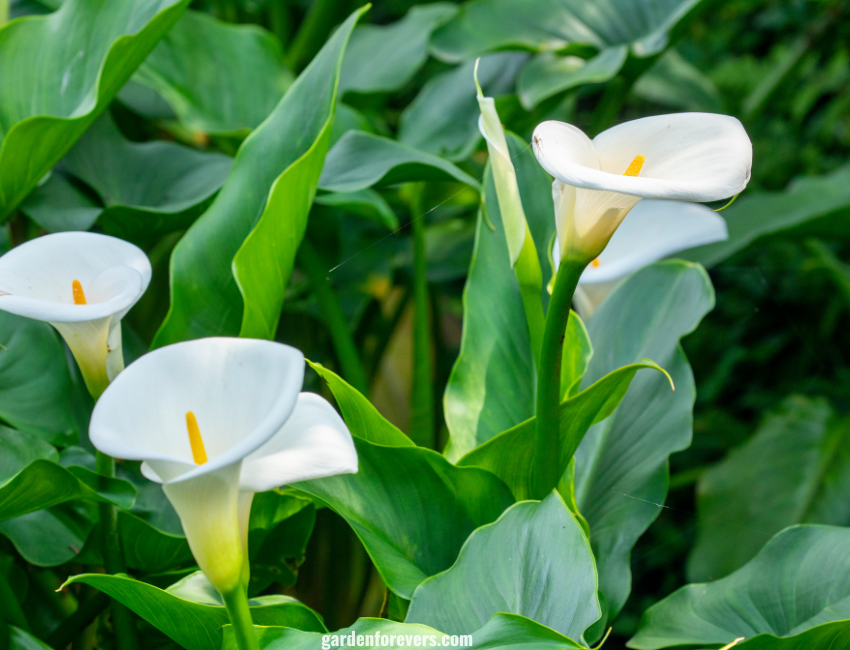
Calla Lilies are known for their sleek, trumpet-shaped flowers and are often used in wedding bouquets and elegant floral arrangements. They thrive in moist, well-drained soil and partial shade.
| Common Name | Calla Lily |
|---|---|
| Scientific Name | Zantedeschia aethiopica |
| Family Name | Araceae |
| Blooming time | Spring to summer |
| Toxicity | Toxic if ingested |
| Symbolism | Purity, faith, rebirth |
Candytuft
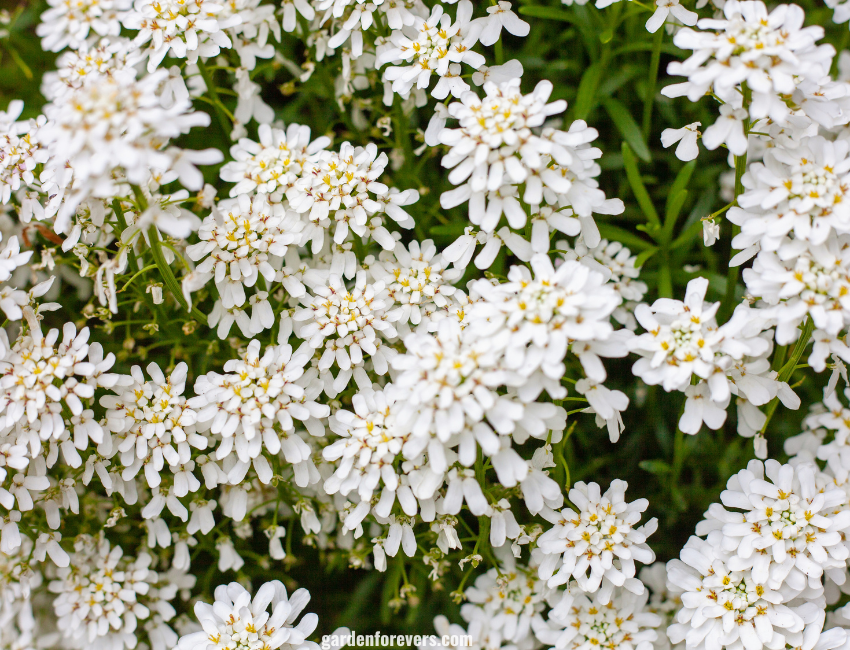
Candytuft is a low-growing perennial with clusters of small, white or pink flowers. It’s perfect for rock gardens, borders, or ground cover, blooming early in the spring.
| Common Name | Candytuft Flower |
|---|---|
| Scientific Name | Iberis sempervirens |
| Family Name | Brassicaceae |
| Blooming time | Spring to early summer |
| Toxicity | Non-toxic |
| Symbolism | Indifference, beauty, simplicity |
Canna Lily
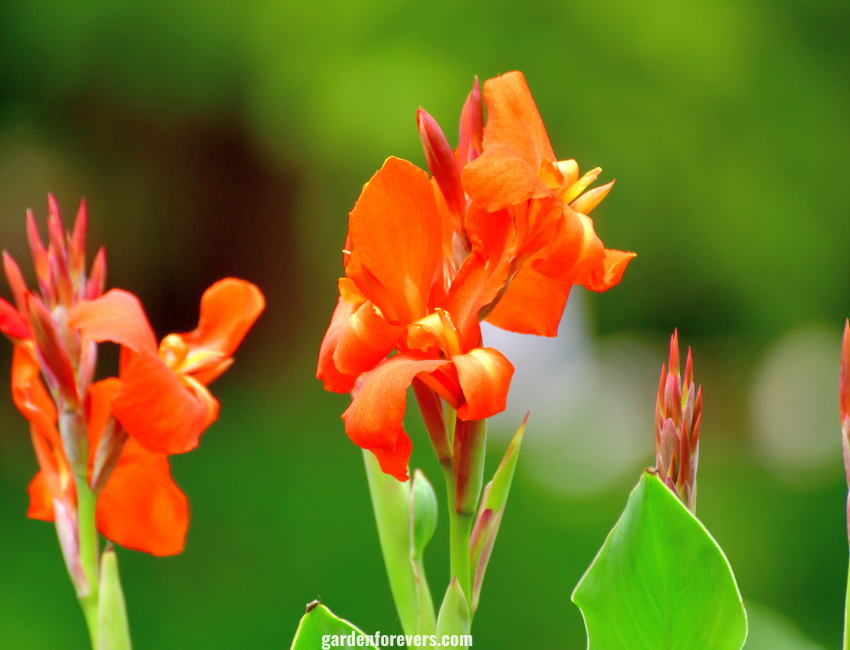
Canna Lilies are bold, tropical-looking plants with large, banana-like leaves and bright, showy flowers in red, orange, yellow, or pink. They thrive in warm climates and full sun.
| Common Name | Canna Lily |
|---|---|
| Scientific Name | Canna indica |
| Family Name | Cannaceae |
| Blooming time | Summer to fall |
| Toxicity | Non-toxic |
| Symbolism | Confidence, beauty, vitality |
Coral Bells
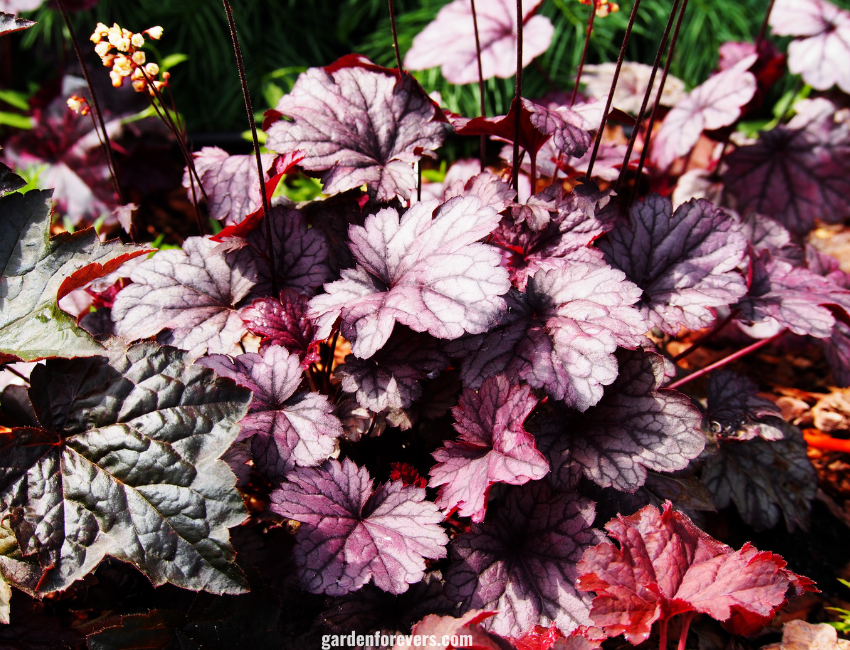
Coral Bells, or Heuchera, are known for their striking foliage in shades of green, purple, and silver, as well as their delicate, bell-shaped flowers. They thrive in partial shade.
| Common Name | Coral Bells Flower |
|---|---|
| Scientific Name | Heuchera spp. |
| Family Name | Saxifragaceae |
| Blooming time | Late spring to early summer |
| Toxicity | Non-toxic |
| Symbolism | Modesty, charm |
Corydalis
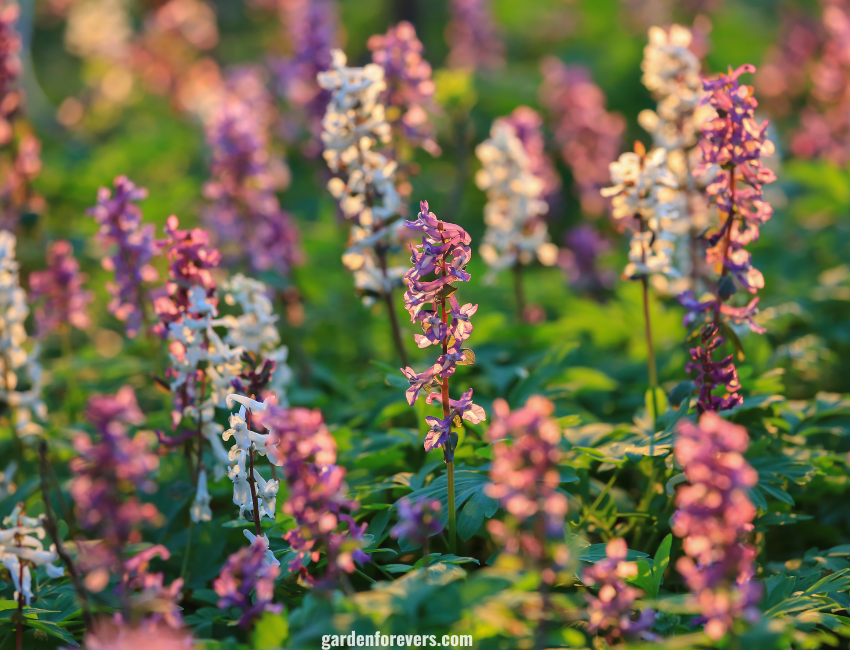
Corydalis is a shade-loving perennial with fern-like foliage and tubular flowers in shades of yellow, blue, or pink. It’s perfect for woodland gardens or shaded borders.
| Common Name | Corydalis Flower |
|---|---|
| Scientific Name | Corydalis spp. |
| Family Name | Papaveraceae |
| Blooming time | Spring to summer |
| Toxicity | Toxic if ingested |
| Symbolism | Good health, energy |
Cupid’s Dart
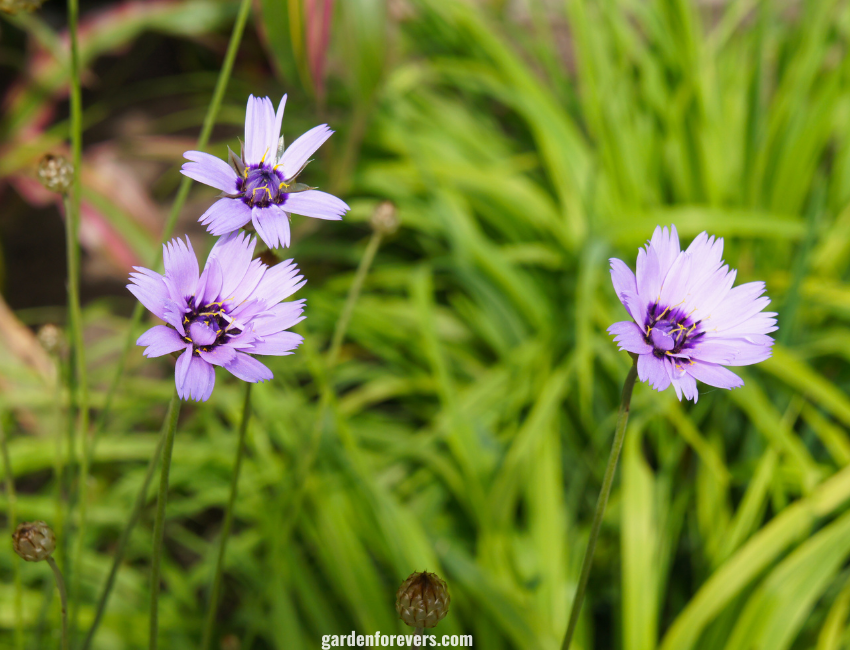
Cupid’s Dart is a drought-tolerant perennial with delicate, lavender-blue flowers. It thrives in full sun and well-drained soil, making it a great choice for rock gardens or dry areas.
| Common Name | Cupid’s Dart Flower |
|---|---|
| Scientific Name | Catananche caerulea |
| Family Name | Asteraceae |
| Blooming time | Summer |
| Toxicity | Non-toxic |
| Symbolism | Love, desire |
Why You Should Add C Flowers to Your Garden
Adding flowers that start with a C to your garden will not only bring beauty and variety but also offer rich symbolism and a range of textures and colors. Whether you prefer the bold look of Canna Lilies or the elegance of Camellias, these blooms will enhance your outdoor space and bring joy to your gardening experience.
By planting these flowers that start with the letter C, you’ll enjoy a garden full of charm and life, perfect for creating a vibrant and breathtaking sanctuary of nature’s finest beauty.

